You may think that breakthroughs in cancer research only happen on a national level or that you have to travel outside our area to receive cutting edge treatment, but there are some top physicians, here in our community, who are playing a vital role in bringing innovations in cancer care to the patients who need them right here in Marion County.
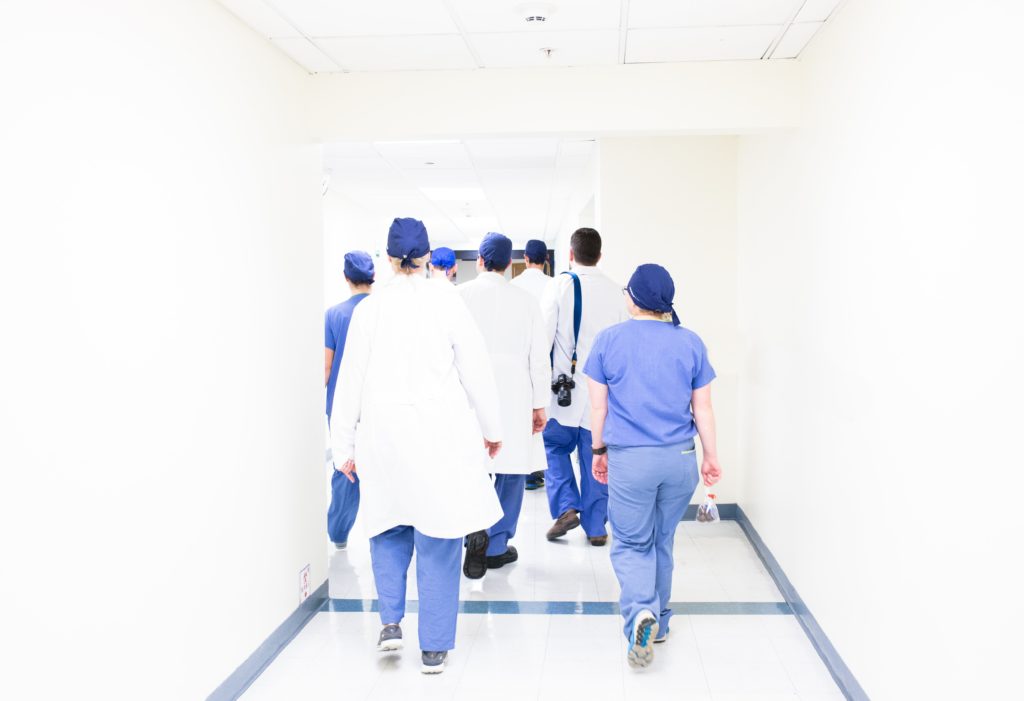
Cancer is currently the second leading cause of death in the U.S., exceeded only by heart disease, but death rates have been steadily declining. According to the American Cancer Society (ACS), U.S. cancer death rates have declined by 29 percent from 1991 to 2017, which includes a 2.2 percent drop from 2016 to 2017—the largest single-year drop ever recorded and reported through ACS statistics. A decline in lung cancer deaths was the biggest driver for the record drop, though lung cancer remains the leading cause of cancer deaths.
In 2020, an estimated 1.9 million new cancer cases are projected to be diagnosed in the United States, the equivalent of some 5,190 new cases each day and approximately 630,000 Americans are predicted to die of cancer—which is a staggering 1,720 deaths per day.
During the last decade, significant advances in research, education, early detection methods and treatment have boosted cancer survival rates while new therapies continue to be developed.
Though options for treatment were once somewhat standard, no matter the type of cancer a patient had, there are currently an ever-expanding variety of treatment options available, depending on the type of cancer you have and how advanced it is.
According to ACS, there are more than 100 different chemotherapy drugs alone. But chemotherapy is no longer the preferred treatment of physicians nor is it being used in the same ways it once was. Many specialists, right here in our area, are employing more modern treatment options that have led to higher survival rates, are employing state-of-the-art equipment to benefit patients and exploring new radiation approaches that are producing remarkable results and successful immunotherapy protocols. These providers also are hosting clinical trials on a local level that are producing notable results.
“We’re doing a lot of cool stuff,” offers Dr. Vipul Patel of Florida Cancer Specialists (FCS). “Traditionally, cancer care was just generic chemotherapy and generic radiation. What I mean by that is that if you had lung cancer or breast cancer, whatever cancer you had, you would be treated with chemotherapy with the hope that it worked. And we knew that some chemo worked better on some types of cancer, so there was some methodology to it,” he continues. “It’s important to know that not all medicines and drugs to treat cancer work the same way.”
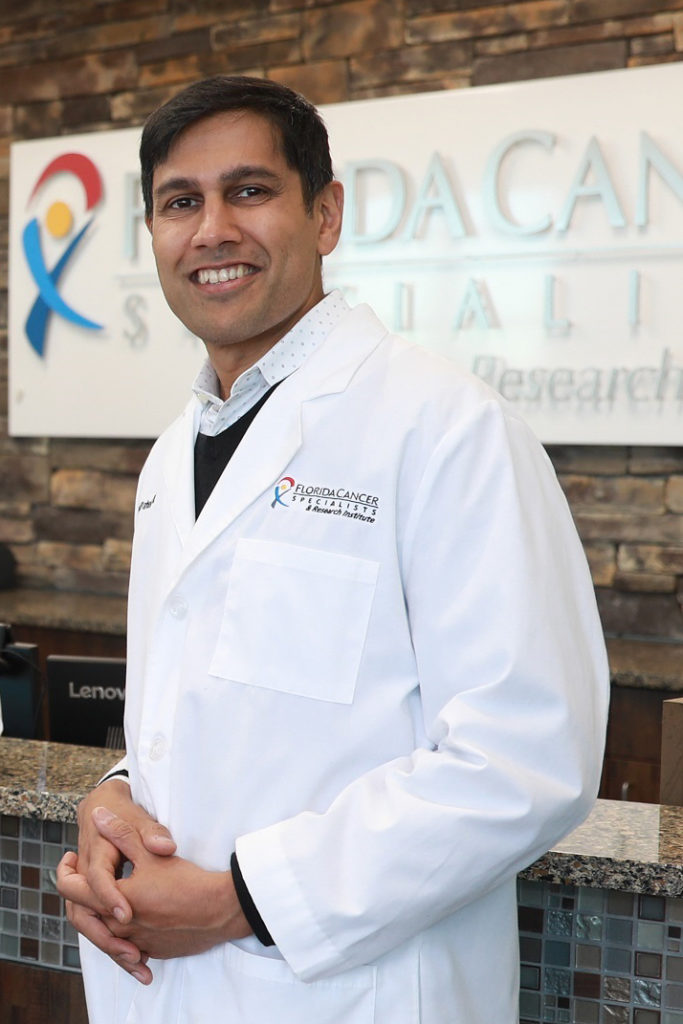 Patel is a dynamic member of the FCS team in Ocala and I learned firsthand how capable and what a forward-thinking a physician he is when he treated my own father.
Patel is a dynamic member of the FCS team in Ocala and I learned firsthand how capable and what a forward-thinking a physician he is when he treated my own father.
“In the last five to seven years, we have moved on to something called next generation sequencing and molecular profiling,” he explains of one of the specialized treatments and technologies employed by the practice.
“What we do is take the cancer itself, pull the DNA out of it and look at the genetics of the cancer. The genetics of the cancer are different from the genetics of the human; even though evolved from the person, it has changed. And, based on the genetics, we can pursue treatment that is specific to that patient. If you came to me 10 years ago with lung cancer, you would get the same treatment no matter what. Now we can pick the chemo based on the patient’s particular genetics.”
“Another thing that we just started at our office is stereotactic radiosurgery to the brain, so we can target lesions in the brain and essentially use high energy to radiate or fry them out of there,” he offers. “It’s almost as good as surgery, but it’s a much less invasive option. We can also do that in the body with stereotactic body radiosurgery, so if a patient is not a candidate for having a tumor removed from their lung, we can treat them this way. So, there will be no surgery, no downtime and it only takes five treatments.”
Patel is also excited about FCS’s work with radiopharmaceuticals. Using a state-of-the-art imaging system, radiopharmaceuticals are injected into the patient and can be used to precisely locate and treat a tumor, and with pinpoint accuracy. Most radiopharmaceuticals consist of a small amount of radioactive material—called a radionuclide—which is combined with a cell-targeting molecule. Once injected into the bloodstream, the radiopharmaceutical travels to and delivers radiation directly to the disease site, killing cancer cells and relieving pain, while limiting exposure to healthy tissue.
“The radiation is attached to target antibodies and they direct the radiation right to the cancer, sort of like a payload,” he enthuses. “We’re also able to do it with chemotherapy. With old school chemotherapy, you inject an IV with chemicals. It goes everywhere and because it is not targeted to the immune system, it goes around and starts killing off the immune system. But now we can attach the chemotherapy molecule to an antibody and deliver it right to the cancer and minimize toxins.”
But the “other cool thing” Patel is keen to talk about is immunotherapy.
“It has been out for a while, but didn’t really get a real head of steam until about five years ago,” he asserts. “With chemotherapy, we inject you with a chemical that essentially kills the cancer cell via some sort of mechanism, either by ripping apart the DNA or inhibiting the way it replicates. It’s kind of like poison. It comes with toxins, so it makes you sick and nauseous. It has gotten better, but there are still a lot of side effects. What we’re able to do [with immunotherapy] is stimulate the patient’s immune system now and it actually goes after the cancer and kills it in a more natural way in which your body tries to eliminate it,” he continues. “And the side effects are much, much less. In fact, a lot of people don’t even notice anything. The survival rates are also much better. For example, six years ago the average person with stage 4 lung cancer lived a year. Now we have some patients that are cured and living for years. We’re able to do that here and it has really changed things.”
Patel has many notable success stories that illustrate the tangible benefits of some of these new therapies.
“I had a patient with lung cancer and it had spread into his liver and his bones,” he recalls. “Before this specific type of immunotherapy, he would have been dead within a year. I did the next gen molecular profiling and determined which chemo was going to work and treated him with a combination of chemotherapy and immunotherapy. Now he is four years out and he is cancer free. I had another guy who had melanoma and was actually sent to hospice by Moffitt (Moffitt Cancer Center). He came to me and I gave him immunotherapy with a combination of radiation treatment and he is five years out,” he continues. “And then I had a second man who was also sent to hospice by Moffitt. I treated him with chemo and antibody therapy and then surgery. He is also five years out and cancer free. Occasionally, there is something you can try and it’s a success story,” he adds, cautiously. “But if we look at this in reverse, obviously there are those patients where we tried the same types of things and they died anyway.”
My father was a Patel success story, so I can attest to the fact that the efforts of this congenial and intrepid doctor are deeply meaningful and can be life changing.
Linda Lord of Silver Springs feels the same about Dr. Rama Balaraman of Florida Cancer Affiliates (FCA), who she affectionately calls “Dr. Rama.”
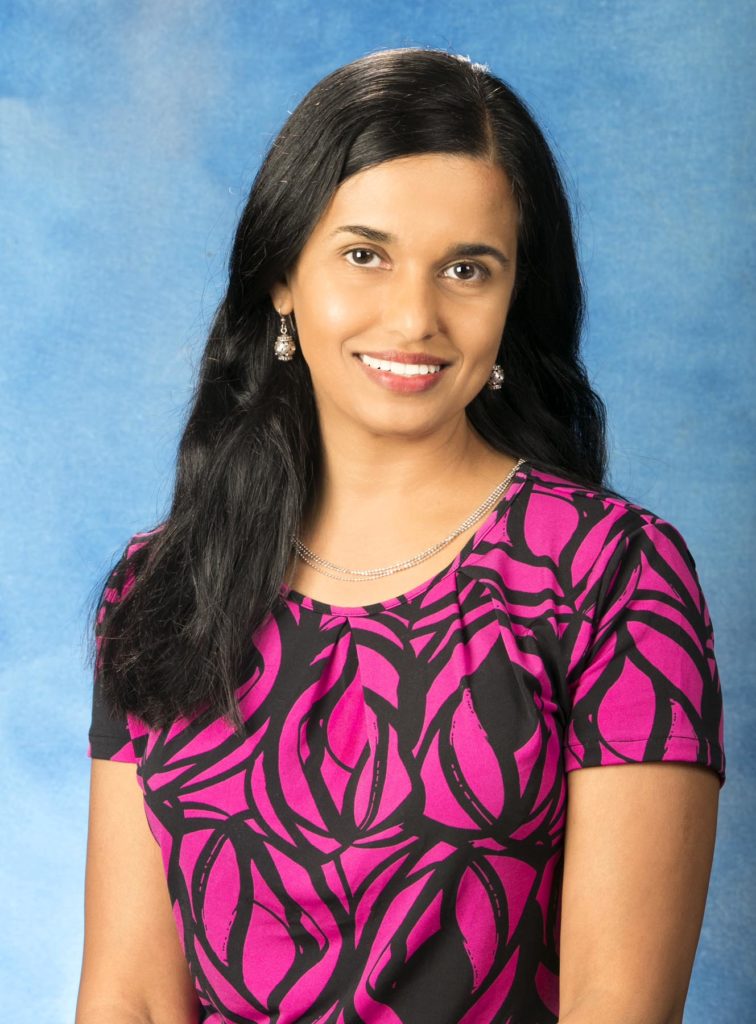 “She’s amazing!” Lord booms about the hematology specialist who saved her life when she was diagnosed with stage 4 lung cancer in 2012. “I was being treated for a constant cough. Then I had a cyst on my head and I went to a dermatologist. Next thing I knew, they were putting me in the hospital,” she continues. “That’s when I found out that I had cancer. They gave me six months. Dr. Rama came in when I was in the hospital and I became her patient. Thank God that I did, because here I am!”
“She’s amazing!” Lord booms about the hematology specialist who saved her life when she was diagnosed with stage 4 lung cancer in 2012. “I was being treated for a constant cough. Then I had a cyst on my head and I went to a dermatologist. Next thing I knew, they were putting me in the hospital,” she continues. “That’s when I found out that I had cancer. They gave me six months. Dr. Rama came in when I was in the hospital and I became her patient. Thank God that I did, because here I am!”
“She had metastatic lung cancer, which was stage 4,” Balaraman recalls. “We treated her with conventional chemotherapy. Response rates for that are generally about 25 percent to 30 percent. We had an immunotherapy study open here at the time. We put her on the study. She was one of the first clients we treated with immunotherapy, and I believe one of the first patients in Florida to participate in the study. She went into remission, but we kept her on the study. With the study, we treat the patient for two years after they go into radiological remission. And we continue to follow the patient after that to see if their cancer comes back or they are in remission. She has been off therapy now for two years and her cancer has not come back. Most people think of that as a cure, but we don’t know yet. There is no evidence on her scans. She’s perfectly normal, at the moment, without any treatment. She was one of the first patients to be on the study, so she’s a landmark patient,” she continues, referencing the clinical trial that the practice was selected to conduct based on their history of conducting such trials. “And she was able to do that here in Ocala in our office. Now that treatment is available without being on the study.”
Balaraman explains that they have done a lot of educational programs in the community for primary care doctors to make them aware there are therapies other than chemotherapy available. And she believes this treatment option can change the way patients deal with a cancer diagnosis.
“Patients don’t have to take a pessimistic view of a stage 4 disease or be frightened now, because a lot of the patients are being offered these options,” says Balaraman. “Before, when we were treating patients with chemotherapy, we were always asking how long can we keep them alive. Now we are asking can we cure the patient and can we avoid chemotherapy. This is my 20-plus year in practice and both the treatment and the conversation has changed.”
Lord, who has been cancer free since October 2018, explains that she was “amazed” by the treatment and agrees with Balaraman in the belief that “attitude has a lot to do with the healing.”
“I didn’t dwell on it, even when I was given the diagnosis,” she recalls. “The treatment made sense to me and I knew she was capable of making the right decisions for me. I knew I was in good hands.”
A Collaborative Approach
Dr. Sachin Kamath of FCS believes that the feeling of being in “good hands” is the key to success for the comprehensive care center where he specializes in radiation oncology.
“For us at Florida Cancer Specialists, one of the things that differentiates us from a lot of other practices is that we all work very closely together,” he explains. “The nice thing is that when patients come to the centers, the patient can see the medical oncologist and the radiation oncologist all in the same day. Oftentimes, we’ll see the patients together, which is really good for the patient. Imaging has become so critical today, so it is important the radiologist is right there. What that translates to is better communication with the patient and less stress for the patient.”
Kamath stresses that this sort of intentional culture of collaboration is actually a significant innovation itself.
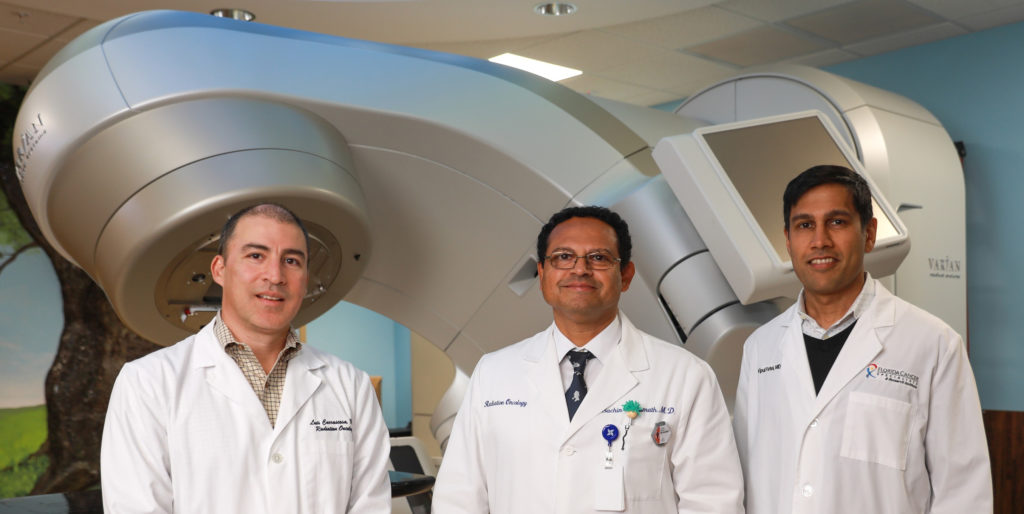 “The biggest thing in cancer care is doctors working together to get the best outcomes for our patients. If you look historically at oncology care, it’s been kind of fragmented. We’ve had surgical oncologists, medical oncologists, radiation oncologists and all the other specialties,” he offers, citing that the patients also had to update their primary care doctors, at each turn, as well. “It was all different practices and the patients have had to basically go from office to office and be the messengers that carry the information around. It’s bad enough, what they’re already going through, but then they also had to make sure that the doctors know what is going on. You can get better outcomes with a comprehensive care approach. If it is easier for them, that leads to better outcomes.”
“The biggest thing in cancer care is doctors working together to get the best outcomes for our patients. If you look historically at oncology care, it’s been kind of fragmented. We’ve had surgical oncologists, medical oncologists, radiation oncologists and all the other specialties,” he offers, citing that the patients also had to update their primary care doctors, at each turn, as well. “It was all different practices and the patients have had to basically go from office to office and be the messengers that carry the information around. It’s bad enough, what they’re already going through, but then they also had to make sure that the doctors know what is going on. You can get better outcomes with a comprehensive care approach. If it is easier for them, that leads to better outcomes.”
Challenging The Standard Of Care
Dr. Norman H. Anderson, founder of the Robert Boissoneault Oncology Institute, is a man on a mission—the problem is that his mission disrupts the conventional thinking of much of the academic and medical communities. It sounds simple enough. Anderson contends that twice a day radiation treatment rather than once a day is a superior treatment option for certain types of cancer, specifically metastatic malignant melanomas. It’s an approach that has led to amazing results for many of his patients.
“When we talk about twice a day radiation therapy, we are not talking about something I discovered. This was actually developed by Dr. Rod Million, the former Chairman of the Department of Radiation Oncology at the University of Florida, about 45 years ago,” Anderson explains. “Rod’s thought was, ‘Let’s take a treatment that has proven to be effective for head and neck malignancies and make it better.’ His theory was, if we reduced the amount of radiation that was given each time, but gave more treatments, could we safely increase the total amount of radiation given and, as a result, increase the cure rate. Rod proved that when you give the radiation at lower doses, twice a day, and you increase the total dose by as much as 10 percent, you increase the cure rate by 25 percent for head and neck malignancies than what once a day would have offered.”
A challenging case set Anderson on a path that he couldn’t turn back from.
“Malignant melanoma is a skin cancer unlike other skin cancers. The first case I ever treated twice daily for metastatic with malignant melanoma, actually the first person in the world treated with this approach, was 25 years ago,” he recalls. “It was a man who had a previous history of having a melanoma removed from his back. The surgeon told him he’d gotten it and he was cured. One year later, he was in the emergency room with severe headaches and unable to stand. They did an MRI. He had 23 separate masses in his brain. The neurosurgeon biopsied two of the lesions and calls me at 2am and says ‘I have a patient you have to see right now.’ I said, I‘d be glad to see him, but you know as well as I do radiation doesn’t work on malignant melanoma. 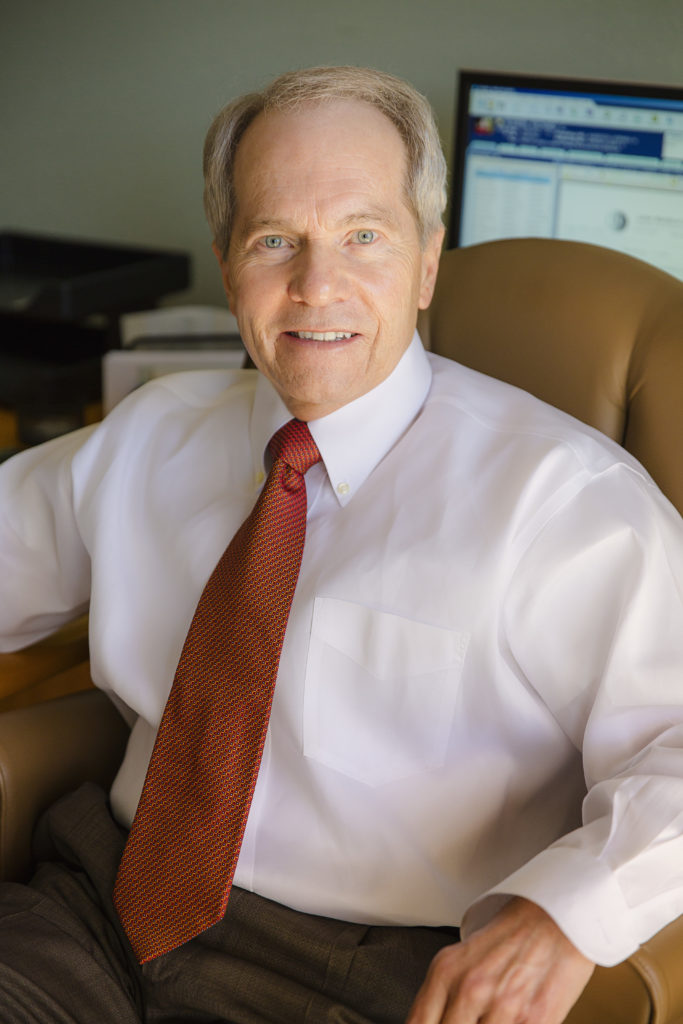 He said, ‘Norm, I don’t care what you do, but we’re not gonna let him die without doing something. He’s 38 and has three children, oldest is 12 and the youngest is 5.’ When I was driving into the hospital I thought, we do have to do something. If I do the same thing we’ve done for decades, he is going to die. So, I thought, we’re going to try twice a day, low-dose radiation on him. All 23 lesions completely disappeared. When he left the Ocala area eight years later, there was no recurrence. Now he’s watching his grandchildren grow up. Since then, we have treated about 50 more patients for metastatic malignant melanoma with twice a day. Are we curing everyone? No, but we’re doing a heck of a lot better than we ever did before.”
He said, ‘Norm, I don’t care what you do, but we’re not gonna let him die without doing something. He’s 38 and has three children, oldest is 12 and the youngest is 5.’ When I was driving into the hospital I thought, we do have to do something. If I do the same thing we’ve done for decades, he is going to die. So, I thought, we’re going to try twice a day, low-dose radiation on him. All 23 lesions completely disappeared. When he left the Ocala area eight years later, there was no recurrence. Now he’s watching his grandchildren grow up. Since then, we have treated about 50 more patients for metastatic malignant melanoma with twice a day. Are we curing everyone? No, but we’re doing a heck of a lot better than we ever did before.”
And although he has recently published his work and received several patents related to the treatment protocol, he is coming up against hurdles to mainstream acceptance.
“I am faced with this dilemma. No one thinks that a private practitioner is going to discover something that no one in the academic world has discovered,” Anderson confides. “If I had been on the staff at any academic center and come up with this, it would be all over the world now. But they look at me and think, ‘You are not qualified to discover anything. You should merely duplicate what we have discovered. You don’t come to us with a discovery.’ Hopefully, we can change that.”
But looking through his catalog of success stories, it’s difficult to argue with his results. Dr. Kenneth Morse of Ocala can attest to the effectiveness of his treatment firsthand. After developing a probable metastatic lesion on his lung, that likely developed as a result of a previous melanoma on his arm, Moffitt Cancer Center in Tampa informed him he had probably a five percent likelihood of survival.
“I’ve known Norm for 40 years. I’m a pediatrician and I took care of his kids growing up,” Morse explains. “Norm urged me to do the twice a day, so I did. That was seven years ago. I have not had any recurrence. I credit Norm with saving my life. I’ve been a physician for 45 years and not only do I think he is really on to something with the melanomas, but he is one of the top five doctors I’ve ever known as far as just the quality of the man.”
If there is one common thread that unites the local physicians we spoke to, it is that they are all dedicated to improving treatment options, access to the best therapies, survival rates and quality of life for cancer patients.
For more information, visit the American Cancer Society at www.cancer.org and the National Cancer Institute at www.cancer.gov






